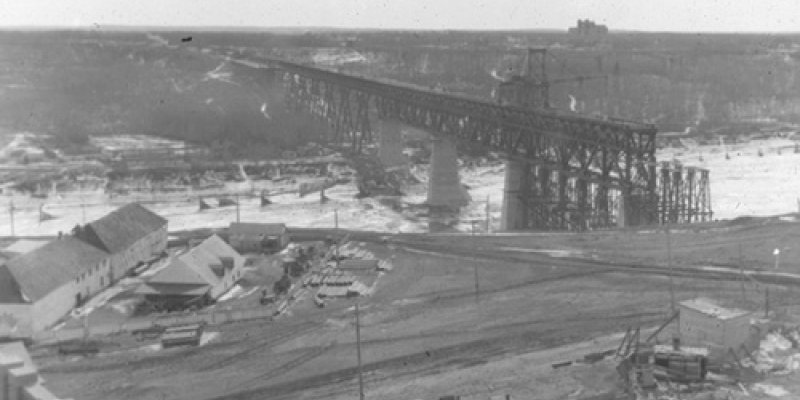
The High Level Bridge has been a landmark in Edmonton since its construction between 1910 and 1913 by the Canadian Pacific Railway (CPR).
The bridge is one of the few ever constructed to combine 4 modes of transportation: train, streetcar, automobile and pedestrian.
The construction of the High Level Bridge provided a historically important transportation link and was a major factor in the amalgamation of the City of Strathcona and the City of Edmonton on February 1, 1912.
The High Level Bridge was designed using 2 distinct truss types: the Pratt Truss and the Warren Truss. These were used for the steel substructure of the 2 decks, one 20 feet above the other. The bridge is 2,550 feet (over 777 metres) long and the base of the rail deck is 156 feet (over 45 metres) above the North Saskatchewan River.
Streetcar traffic ceased in 1951, and the CPR stopped running trains over the upper deck in 1989. Vehicular traffic and a pedestrian walkway continue on the lower deck. A tourist streetcar operated by The Edmonton Radial Railway Society runs seasonally on the upper deck.
Designated a Municipal Historic Resource
The High Level Bridge was designated a Municipal Historic Resource by Bylaw No. 11114 on September 13, 1995. The Bylaw ensures that the Bridge cannot be destroyed or altered. It also lists the Bridge’s character-defining elements, which include the truss systems, the concrete piers, the bridge superstructure and substructure, the metal handrails, and the black paint colour.
The Bylaw recognizes that ongoing maintenance may require these significant architectural and technical elements to be repaired or replaced over time. The intent of the Bylaw is to ensure that any modifications made to the bridge respect its original construction techniques, scale, design, and visual impact.




